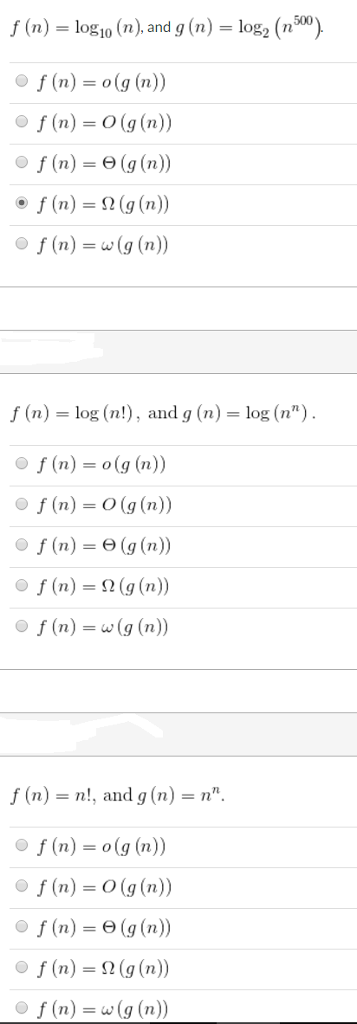Answered step by step
Verified Expert Solution
Question
1 Approved Answer
f(n) = log_10(n), and g(n) = logt_2(n^500). F(n) = o(g(n)) f(n) = O(g(n)) f(n) = theta(g(n)) f(n) = ohm(g(n)) f(n) = omega(g(n)) f(n) = log(n!),

Step by Step Solution
There are 3 Steps involved in it
Step: 1

Get Instant Access to Expert-Tailored Solutions
See step-by-step solutions with expert insights and AI powered tools for academic success
Step: 2

Step: 3

Ace Your Homework with AI
Get the answers you need in no time with our AI-driven, step-by-step assistance
Get Started


